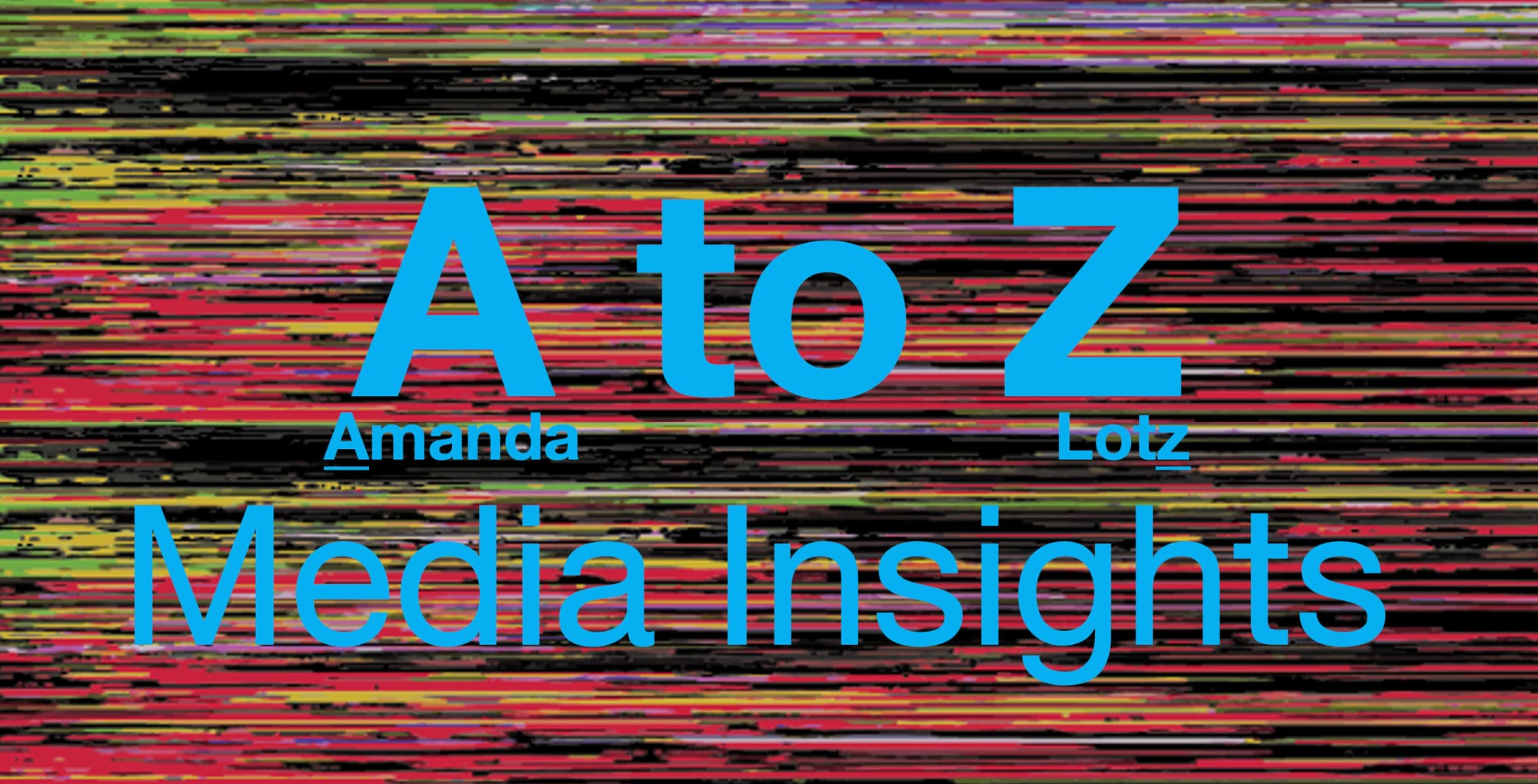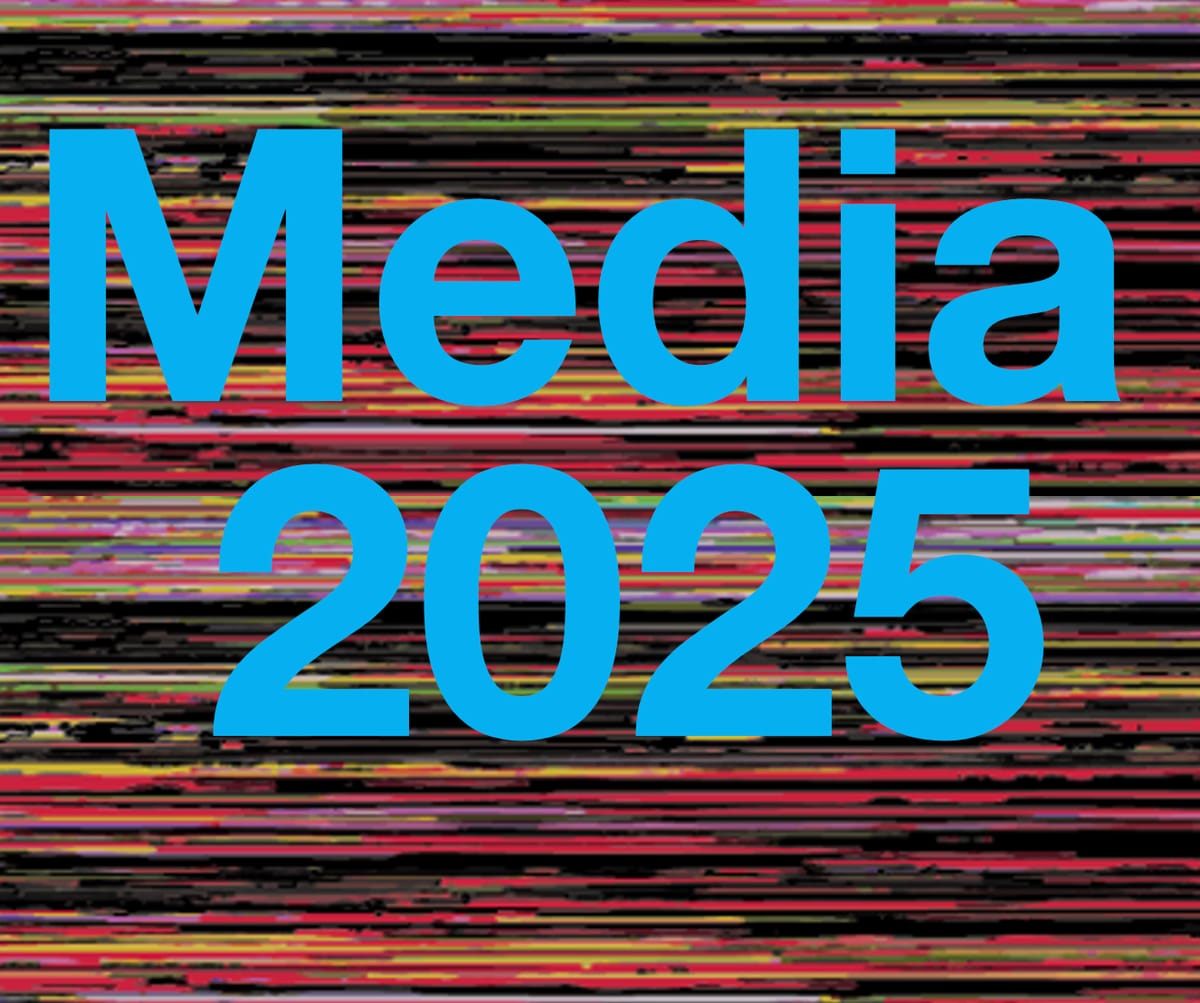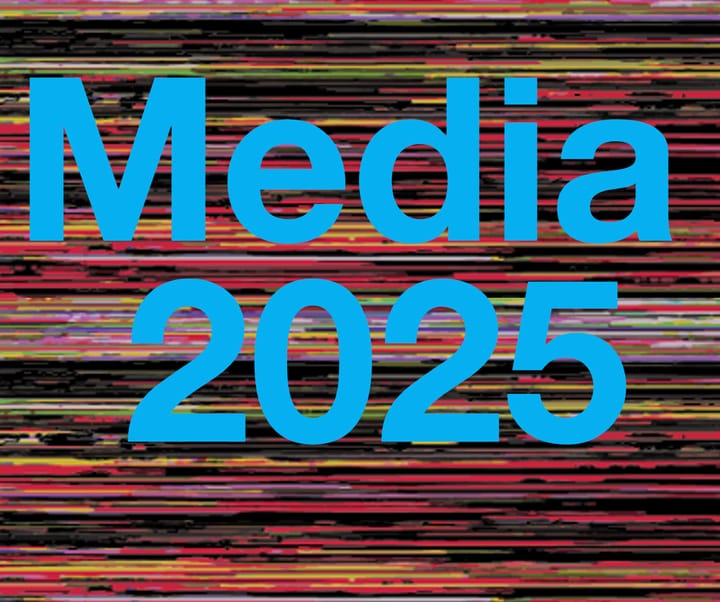Announcing Media 2025 – an experiment in digital-era publishing that is a cross-between a limited newsletter and a short book. It's 11 posts (10 paywalled – nearly 20,000 words) that provide state-of-the-moment thinking. Details and table of contents here.
Launched 3 August 2025
What is this?
A pencil sketch of my read of how our media world generally works now in terms of the making and consuming of media. It is early stage but well-considered thinking that is informed by initial surveys and user interviews about media use along with a lot of reading. I’m in the first of a four-year agenda of user-based/audience research, but the first-stage evidence supports the need to raise some questions about what seems mainstream thinking. Again, a pencil sketch.
The next years will involve testing those sketches. It may require erasing some lines but will lead to redrawing and augmenting other bits with ink. My hope is that it reveals the pertinent insight needed to do more than cycle through more years, decades even, of applying old ways of thinking to new phenomena and wondering why the answers don’t work. The thinking isn’t all substantiated – and I signal when I’m hypothesizing – but it explains where we need to break with past thinking and why. It is provocative by design.
Who is this for?
Curious people. It is written more for those working in media industries than those who study it, but just ‘those working in media industries’ encompass a broad, heterogeneous potential readership. Issues and concerns vary by sector, divisions of companies, country, etc. There will never be one answer for everyone. Consulting arrangements deliver specific answers. Reach out if that’s what you are looking for.
Usually I answer questions to satiate my own curiosity and then I write for whatever audience I think will be most interested in my answers. But I don’t have clear answers yet. Too much thinking, opining, and decision-making is being done in far remove from the reality of humans, and too much ‘insight’ is being derived from thin indicators (likes, views, time spent). This limits both industrial and scholarly conversations and this writing tries to rectify that.
Why?
Why not? The media world available to most is now incomprehensibly vast and remarkably little work has gone into understanding that use at the level of individual humans.
There are a lot of moving parts and pieces – technologies, services, business models, content – and it is difficult to capture their relation or find their place in the puzzle. Because I exist outside the day-to-day of media making, I have a different angle on which pieces matter; I see a broader expanse but don’t always see the same level of operational detail. My ‘media scholar’ life currently pays the bills, but that work also yields insight valuable to those working in media, so I’m writing for readers interested in those more applied ways here.
To be clear, my interest isn’t how does any one entity make more money – that can’t be addressed generally because a strategy that enriches distributors likely comes at the expense of media makers, etc. My interest is overall ecosystem sustainability and creating a balance between creative and commercial components that enables an array of creativity that supports socio-cultural needs of makers and users within a non-rapacious version of capitalism.[1]
Why this form?
Thinking, processing, and writing with the scale and sophistication worth doing takes a year (given teaching, academic publishing, and fiddling while higher ed collapses). A regular newsletter doesn’t suit the workflow of my day job, and better thinking emerges when I commit to the process of connecting several 1,000 word chunks. I’ll still offer fleeting thoughts on LinkedIn and am always happy to strike up a conversation. The empowerment of digital era distribution is that it allows consumers to go at their own pace. I’m offering this in a single drop but it isn’t meant to be absorbed in one sitting.
An actual book takes too long to publish (another year just in production), and this is an experiment to see if I can use the digital tools I carry on about to effectively make and distribute content. (Those who have been around for the long ride know that Portals was effectively self-published in print and open access as a similar experiment in digital distribution and business models. It’s my second most-cited publication so I guess it delivered on impact).
I promise GenAI will never write a word I offer, even if you see a bunch of en dashes. GenAI learned over-using en dashes from all my work it’s hoovered up ;)
This post and the intro are free but I'm experimenting with a paywall for the 10 posts totalling nearly 20,000 words. I'm doing something the software wasn't exactly meant to do, so apologies if there are bumps. It is all in pursuit of better understanding the opportunities and limits of digital-era media distribution.
Media 2025 Contents
Introduction – Using media in 2025 (not paywalled)
Remembering that people use media and more explanation of Media 2025.
1–After scarcity: What has changed
This first bit won’t be earth shattering to anyone reading this, but it concisely captures how we got here to set the table with shared language and assumptions before diving in.
2–The challenges – and solutions – to understanding media now
After 25 years of digital change, the media sector stands substantially restructured. Most users don’t draw lines between sectors (TV, film) or within subsectors (linear, streaming); they just see an array of media available to satiate their leisure needs with varying degrees of friction.
3–Requiem for mass media
Many concepts of twentieth-century media culture went undefined because they seemed obvious. The bounds of ‘mass media’ were easy to observe and intuit, and it was difficult to imagine an alternative. The media sector has struggled to evolve its business because it has believed that twenty-first century hits are mass media.
4–Breaking from the legacy of mass thinking
Mass and micro media content has long coexisted, but the balance has shifted. One set of logics is not more ‘right’ or bound to ‘kill’ the other, but media makers need to understand what business they are in, what logics apply, and pursue appropriate content strategies.
5–Many ‘creators’ are ‘corporate’
Category errors occur when we ascribe characteristics of some to the whole. They often occur when we aren’t clear about what characteristics bind categories. A lot of thinking about the ‘creators’ suffers from this problem and it is preventing the development of smart thinking and strategy.
6–Useful subcategories of hosted media businesses
Hosted v licensed provides a stronger foundation for understanding the industrial factors that shape two crucially distinctive industrial sectors, but more distinction is needed.
7–On ‘YouTube’ – the video bazaar
We need to rethink how we categorize YouTube. YouTube isn’t TV; YouTube isn’t social media; YouTube isn’t a channel. YouTube is infrastructure.
8–Instead, media without borders
To understand media use in an era of such abundant choice and access, we must start by understanding why people use media and why they make it part of their regular diet. We must look for patterns of individuals and build up, not aggregate.
9–Question demographics, rethink user segments that matter
Demographic characteristics have been another major frame for organizing understandings of media use. We should not begin by assuming that demographic features are as predictive or informative as we’ve allowed them to be.
10–Early findings
We are all doing quite different things.
[1] Acknowledging how a lot of the current US economy isn’t operating in terms of the competitive markets assumed in capitalism; we need to fight the sense that much of this is ‘normal’ or how it has always worked.
Free subscribe if you'd like to stay up to date and receive emails when new content is published!




